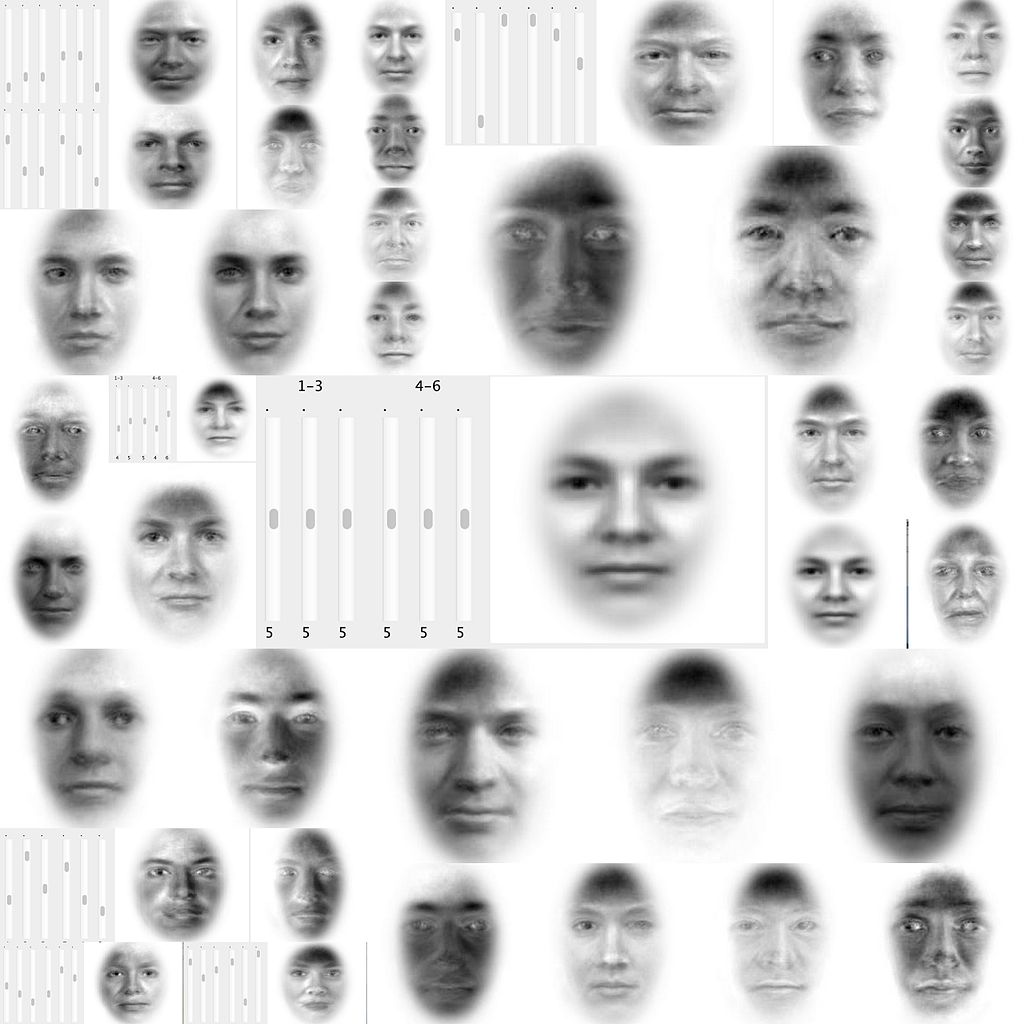Introduction to Machine Learning and Data Mining
Kyle I S Harrington / kyle@eecs.tufts.edu
Some slides adapted from Roni Khardon

Image from Alex Poon
Features
The input to a ML algorithm/model is composed features (aka attributes)
The output is a class or a value
The Black Box Delusion

Can we just take tons of measurements, feed them into our ML algorithm, and start making predictions?
Features
- More features generally slow ML algorithms down
- Irrelevant features can inhibit performance
What can we do about this?
Feature Selection
- Eliminate features
- Choose subsets of features that work well
- Build it into the ML algorithm
Instance Transformation
Our dataset $D$ has $N$ dimensions, for $N$ features
Instance transformations reduce the number of dimensions by transforming the features themselves
Instance Transformation
If we had a dataset with red, green, blue, and yellow features (N=4),
Then we might transform the dataset to $( red - green ) / (red + green)$ and $ (blue-yellow) / (blue + yellow)$
Principle Component Analysis
Principle component analysis (PCA) maps from one set of axes to orthogonal axes
Roughly speaking, project onto the axes of highest variation
Principle Component Analysis
Eigenface reduces faces to low-dimensional space
| Bases | Generated faces |
 |
 |
Manifold Methods
Datasets can be thought of as manifolds
 (Saul and Roweis, 2003)
(Saul and Roweis, 2003)Embed data in a low dimensional space, while preserving distance between points
Instance Transformation
Instance transformations reduce the number of dimensions by transforming the features themselves
Most methods of instance transformation are unsupervised
Filter Methods
Filter irrelevant features based upon the dataset
Filter Methods
- Assign a score to each feature with a heuristic
- Filter out useless features
Filter Methods
Ranking features based upon correlation between feature and class
$Rank(f) = \frac{ E[( X_f - \mu_{X_f} ) ( Y - \mu_Y ) ] }{ \sigma_{X_f} \sigma_Y }$
where $f$ is the feature of interest, and $Y$ is the class
Filter Methods
Mutual information between a feature and class
$Rank(f) = \displaystyle \sum_{X_f} \displaystyle \sum_Y p(X_f,Y) log \frac{ p(X_f,Y) }{ p(X_f) p(Y) }$
where $f$ is the feature of interest, and $Y$ is the class
Filter Methods
- Assign a score to each feature with a heuristic
- Filter out useless features
What issues could there be?
How necessary is this?
Filter Methods
Issues:
- How many features do we keep?
- Heuristics are only applied to 1 feature
Wrapper Method
- Select a subset of features
- Run a ML algorithm
- Use performance of ML algorithm to choose best subset
What is appealing about this?
Wrapper Method
Advantages of using validation sets
Features are tailored to ML algorithm
Considers different ways of combining features
Wrapper Method: Forward Selection
Start with subsets of only 1 feature
Grow subset of features by adding 1 new feature per iteration
Wrapper Method: Backward Elimination
Start with the full set of features
Eliminate 1 feature per iteration
Wrapper Method: Alternatives
Exhaustive search (consider all subsets)
Alternative AI methods (simulated annealing, genetic algorithms, ...)
Feature subset search is NP-hard
Comparing Filter and Wrapper Methods
Filtering: 1-step process, considers features independently
Wrapper: iterates through subsets of features, selects subset that matches ML algorithm
Feature Selection within ML Algorithm
When searching/optimizing, provide an incentive to be simple (sparse) by penalizing complexity
Will be covered later (L1 regularization)
Feature Preprocessing
The range of values for a given feature can impact an algorithm's performance
Remember using the value of the year directly on assignment 1?
Linear scaling
Scale the values into the range $[0,1]$
$x \leftarrow \frac{ x - x_{min} }{ x_{max} - x_{min} }
Scale based on training set only
Z-normalization
Scale the distribution to have mean=0 and std=1
$x \leftarrow \frac{ x - \mu_X }{ \sigma_X }
Scale based on training set only
Feature Discretization
Some algorithms only work on discrete features
We may need to discretize real-valued features
Feature Discretization
Calculate the histogram
This divides the values into bins
- Equal bin sizes
- Equal # of instances per bin
Feature Discretization
Alternatively, use a heuristic/ad-hoc method to discretize in a useful way
E.G. Build a decision tree, let the DT algorithm discretize, and use the split values of the optimized tree
From Discrete to Numerical
Some features are unordered (i.e. Browsers = [ Firefox, Chrome, Safari ])
Most common approach is to use unit vectors:
| Firefox | Chrome | Safari |
| 1 | 0 | 0 |
| 0 | 1 | 0 |
| 0 | 0 | 1 |
Quiz 1
Similar assignment 3
Covers: kNN, Decision trees, Naive Bayes, Measuring ML algorithms
What Next?
Quiz 1
Hands-on with Features